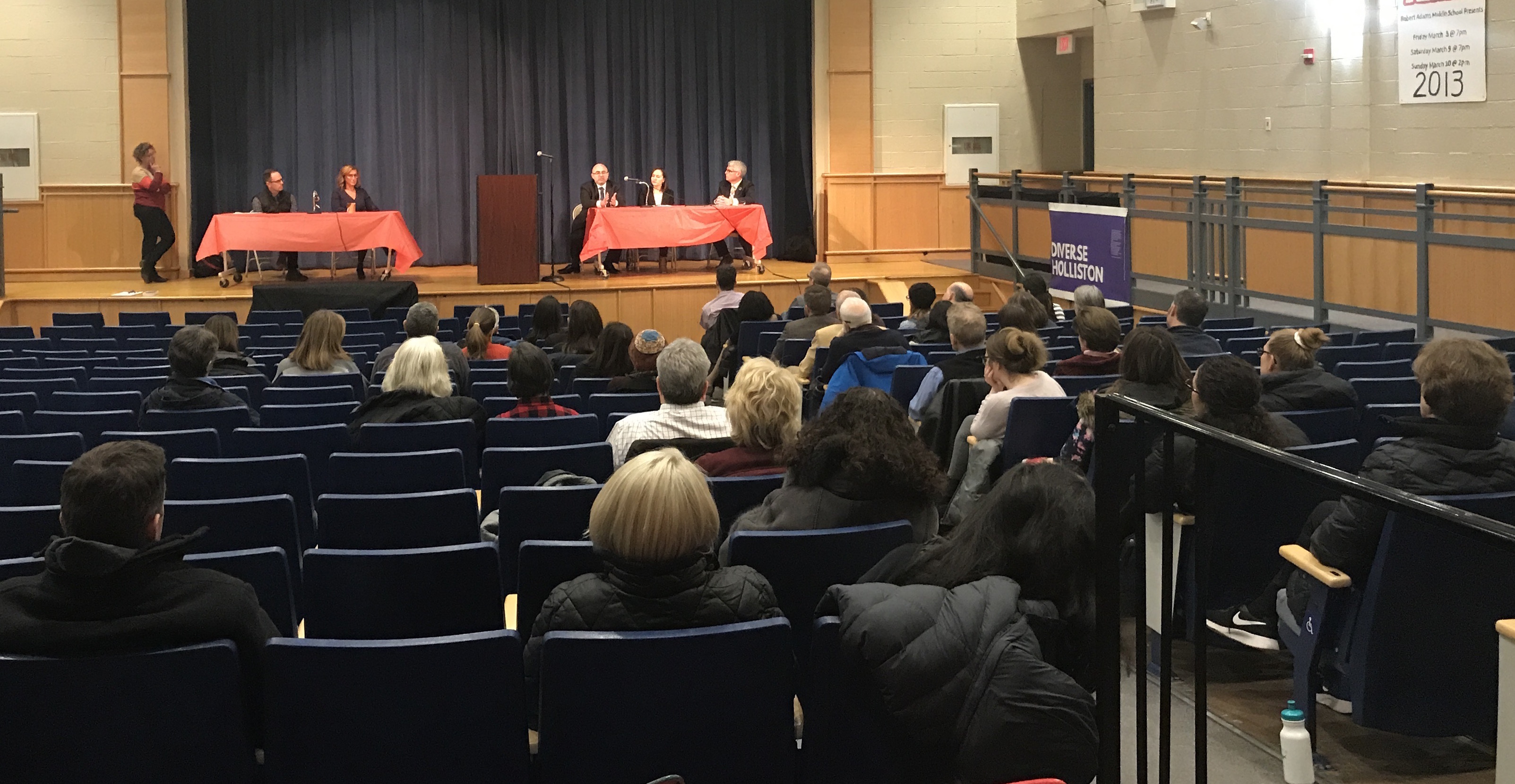On Wednesday, January 16th, at the Adams Middle School auditorium, Diverse Holliston held a community conversation entitled “Why Hate? Why Here? Why Now? What’s Next?” centered around the discovery of a swastika on an elementary school playground in the town. Moderated by Michelle Diamond, the group presented a panel discussion to a group of about 70 people, followed by an invitation for the audience to join in.
The panel included Rev Nathan Detering, Senior Minister for the Unitarian Universalist congregation in Sherborn; Rabbi Jennifer Rudin of Simcha Services; Rabbi Steven Edelman-Blank of Temple Beth Torah; Dr. Barbara Fritts; and Dr. Bradford Jackson, Superintendent of Holliston Public Schools.
Panel discussion moved from what is being taught at each grade level of our local schools, to how Nazis had latched onto what began as a positive symbol, changing its meaning.
When asked how to touch on conversations in our community, Rabbi Edelman-Blank suggested that pride – celebrating each one’s own identity was key. Jackson added that children are a reflection of our community, not independent of that, that finding a swastika reflects ignorance and hatred of at least one student – and that parents must model positive behavior as children take cues from adults. Rabbi Rudin suggested having deliberate conversations about uncomfortable topics, sharing the incredible sense of fear her own family felt when they heard of the swastika found.
“When incidents like this happen,” said Rabbi Rudin, “All that fear, rational or irrational, comes back.” Rudin explained the importance of balancing informing children with fulfilling their need to feel secure in their community, and that there was comfort in the fact that other people were coming together and caring about this.
Rev. Detering, a Holliston resident, brought up the issue of neighborhood, noting that most of the year, he and his family are self-reliant, but in winter storms, neighbors rely on each other. For those who don’t think this affects them, he brought up the famous quote by Martin Niemoller, “And Then They Came for Me”.
Dr. Fritts, a psychologist and social justice advocate, suggested that our society tends not to have difficult conversations, out of a sense of politeness, but like Rudin, noted their importance. She illustrated her point by having the audience finish familiar sentences of “Don’t rock the ___.” And “If you can’t say something nice, ___________.” She explained the concept of “minority stress” for members of minority groups, who experience many microaggessions and are often challenged as being “too sensitive” or “misunderstanding.”
“We learn that to stand up to hate is risky,” said Dr. Fritts. If you’re a member of a dominant group, you have the privilege of ignoring or diminishing, but that makes it seem like this type of behavior is okay. This weighs on those (it affects). In this case, Jewish kids who understand what the swastika is feel a little less safe. We need to work as a community to challenge the culture of silence and politeness.” Fritts recommended a book, White Fragility, by Dr. Robin DiAngelo, that addresses the issue of difficulty talking about racism.
Conversation opened up among the audience members, many of whom explained how personal the graffiti felt to them and their families, with some insisting that the media, also, needs to do a better job of naming the antisemitism that the swastika has come to represent.

Issue Date:
February, 2019
Article Body:
